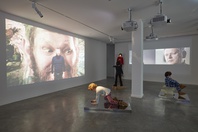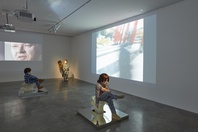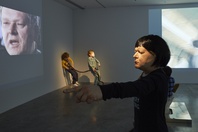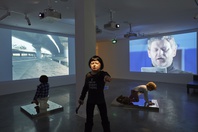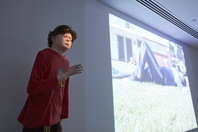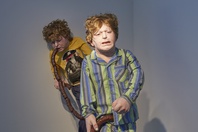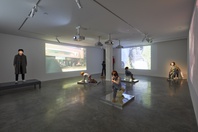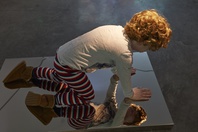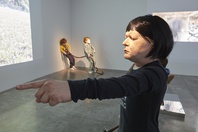Ronnie van Hout
Melbourne
2017
Displayed 2017 at Museum of Contemporary Art Australia
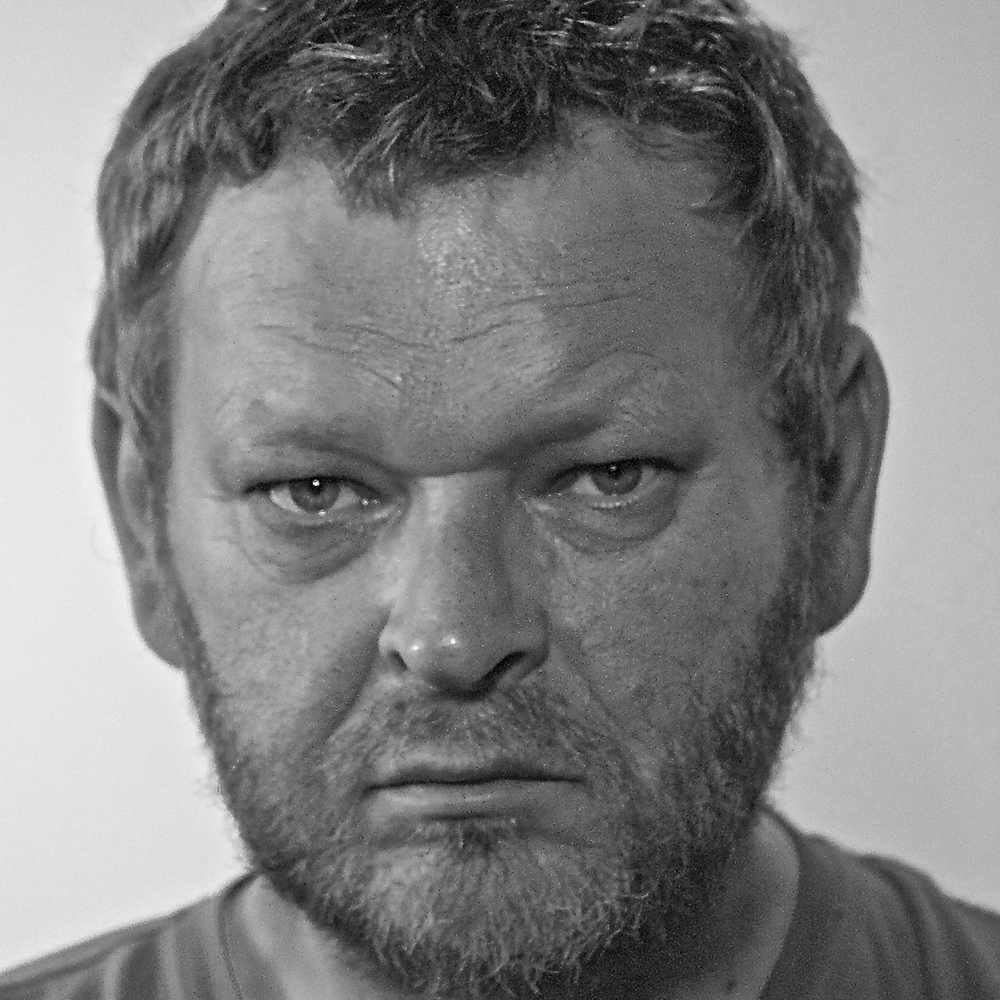
Ronnie van Hout
Born 1962, Christchurch, New Zealand. Lives and works Melbourne
Through sculpture, film, embroidery, photography and music, Ronnie van Hout’s work explores ideas about memory, personality, family history, the artistic life and self-portraiture. In June 2016 van Hout’s sculptural commission Quasi was unveiled on the roof of Christchurch Art Gallery Te Puna O Waiwhetu, New Zealand. The five-metre-tall sculpture combines scans of the artist’s face and hand to create a surreal and playful presence overseeing his childhood hometown. Van Hout has exhibited in New Zealand and Australia since the early 1980s.
Artist text
by Mark Feary
There is vulnerability in the act of self-portraiture, to represent oneself as more than just a physical form, yet not in a way that might be read as aestheticising or beautifying. The work ought to bear a likeness, but it should not be an idealisation of the self. It may present the artist as serious, yet not portentously so; weary, yet not through the cynicism of looking at and thinking about oneself for too long. Working within a field of arguably limited influence, most artists benefit from the fact that they are not actually recognisable to a broader public. Ronnie van Hout’s self-referential sculptures would unlikely suffer the same condemnation as Madame Tussauds’ recent depiction of Justin Bieber, which fans have lamented as making the singer appear ‘depressed’ and allegedly under-representing his ‘hotness in real life by 10,000’, according to articles arguably not worthy of citation.
In the installation I Know Everything (2017) a coterie of sculptural Ronnies flank the viewer at every turn, staring and looming as one enters. They are the motionless front line, watched over by a further abundance of Ronnies on the walls, as if to reinforce an infinite presence. Similar to entering one of those almost entirely mirrored environments – sometimes in an elevator, sometimes in a grad show – where one sees oneself reflected endlessly. Except in this environment, we are looking not at ourselves but at someone else; or, rather, someone else is staring at us. It is unnerving insofar as we are the intruder in this haunting illusion, and the artist has shifted the gaze from the viewer to the subject. The artist draws on his well-noted interest in horror and collides this with the potential for being singled out in a crowd. The Ronnies we encounter might initially seem vulnerable on the open stage, but they are also wielding the microphone, and with that comes the potential to isolate and reduce an audience member to shreds, for we are very much in the front row.
It is as if some force has gathered all the nude sculptures one could muster in a museum, clustered them tightly together in the same confined room, positioned them all towards the entrance, and abruptly thrust us through the door. It is if we are the ones who have forgotten to wear trousers to school.
This is the disconcerting allure of van Hout’s work, appearing initially as humorous and vulnerable, with the moderated scale of the sculptures that suggests children – innocent youth clad in their pajamas and slippers – shattered as the ageing face of the child becomes apparent. These man-boys bear none of the innocence or optimism normally associated with adolescence; instead, they seem to reflect the moment when a child comes to the shattering realisation that the world does not revolve around them, that adults lie, and no-one really understands them.
